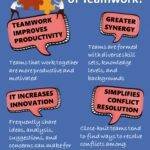
The Six Emotional Leadership Styles
Every leader should know that there are six emotional leadership styles that are useful to carry out in different circumstances.
Scientific research shows that a leader’s emotional state can impact everyone in an organization. The leader’s mood can cause a chain reaction that affects not only morale but also productivity and the bottom line.
So, as a leader, developing a higher level of emotional intelligence (EI) – your ability to manage your own emotions and to read other people’s – is an important business skill.
Below we explain the six emotional leadership styles, when to use them and how to develop them.
The Visionary Leader
The Visionary approach to leadership is summed up by the phrase, “Come with me.” Visionary leaders are inspiring, they tell their teams where they’re heading, but don’t dictate how they’re going to get there – they encourage their team members to use their own initiative to solve a problem or to meet a target.
Empathy is the most important aspect of Visionary leadership.
Visionary leadership is most effective when your organization needs a new vision or a dramatic new direction, or for helping your team to manage change. However, it’s less likely to be effective when you’re working with a team that’s more experienced than you are. In these cases, democratic leadership is more likely to be effective.
Visionary leadership can create the most positive results of all the six leadership styles, but it may also be overbearing if you use it too much.
To develop a Visionary leadership style focus on increasing your expertise, vision, self-confidence, and empathy. Get excited about change, and let your team see your enthusiasm – remember, it’s infectious!
The Coaching Leader
The Coaching leader’s approach is, “Try this.” This style connects a team member’s personal goals and values with the organization’s goals.
This style is empathic and encouraging, and you can use it when you want to focus on developing people for future success. The style centers on having in-depth conversations that may have little to do with people’s current work, instead focusing on long-term life plans and how these connect with the organization’s mission.
This style has a positive impact. It establishes rapport and trust, and increases motivation.
Use the Coaching style when you have a team member who needs help building long-term skills, or if you feel that he or she is “adrift” in your organization and could benefit from a coaching or mentoring relationship.
However, coaching can fail when it’s used with an employee who is not making an effort, or who needs a lot of direction and feedback. In these cases, Pacesetting or Commanding leadership may be more effective.
The Affiliative Leader
The Affiliative leader believes that “People come first.” This style promotes harmony within the team, and emphasizes emotional connections.
It connects people by encouraging inclusion and resolving conflict. To use this style you need to value others’ emotions and have a strong awareness of their emotional needs.
Use this style whenever there is team tension or conflict, when trust has been broken, or if the team needs to be motivated through a stressful time.
Leaders who use the Affiliative style are highly focused on emotion. So, learn how to resolve conflict and how to be optimistic.
The Democratic Leader
The Democratic Leader asks, “What do you think?” The Democratic leadership style focuses on collaboration. Leaders using this leadership style actively seek input from their teams, and they rely more on listening than directing.
This style is best used when you need to get your team on board with an idea or build consensus. It’s also effective when you need your team’s input.
The Democratic leadership style shouldn’t be used with people who are inexperienced, lack competence, or aren’t well informed about a situation. It’s best to ask for input from team members who are motivated, knowledgeable and capable.
To develop a Democratic leadership style, involve your team in problem solving and decision making, and teach them the skills that they need to do this. Also try to improve your active listening and facilitation skills.
The Pacesetting Leader
The Pacesetting leader says, “Do as I do, now.” This style focuses on performance and achieving goals.
Pacesetting leaders expect excellence from their teams, and they will often jump in themselves to make sure that targets are met. This style doesn’t “coddle” poor performers – everyone is held to a high standard.
While this can be a successful style, it can have a negative effect on the team, leading to burnout, exhaustion and high staff turnover.
Try the Pacesetting leadership style when you need to get high-quality results from a motivated team, quickly. You may also want to work on your motivation skills, so that you can get the best from your people.
The Commanding Leader
The Commanding Leader demands, “Do what I tell you.” Commanding leaders use an autocratic approach. This often depends on orders, the (often unspoken) threat of disciplinary action, and tight control.
So, it’s important to remember that people in democratic countries are used to having a high level of control over their lives and their work, and that this approach could deprive them of this. What’s more, because this leadership style is so often misused, it can have a profoundly negative effect on a team.
The Commanding leadership style is best used in crises to jump-start fast-paced change and with problem team members. Be cautious when setting out to develop a Commanding leadership style.
Remember, this style is very easily misused, and it should only be used when absolutely necessary. To work effectively in these high-pressure situations, learn how to manage a crisis, think on your feet, and make good decisions under pressure.
(Reference: https://www.mindtools.com/)


